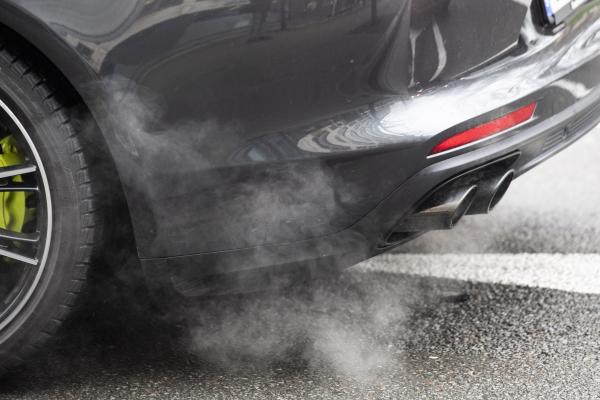
The first Zero Pollution Outlook by the Joint Research Centre analyses whether the EU is on track to reach its zero pollution targets with current and newly proposed EU policies. The outlook demonstrates that we collectively need to make stronger efforts to reach the ambitious targets.
Pollution is one of the top three global issues threatening the health of our planet. On its own, air pollution causes 9 million premature deaths globally every year. Pollution also effects our waters and soils, driving biodiversity loss besides threats to human health and well-being.
Last year, the Commission adopted an action plan with a vision for a toxic-free environment, to reduce by 2050 air, water and soil pollution to levels that are no longer harmful to health and natural ecosystems.
The Commission translated this vision into key targets for 2030, among others aiming for:
- 55% less premature deaths caused by air pollution;
- 50% reduction of plastic litter at sea;
- 30% fewer microplastics released into the environment;
- 50% reduction in nutrient losses and chemical pesticides’ use to improve soil quality;
- 25% less EU ecosystems where air pollution threatens biodiversity;
- 30% decrease in the share of people chronically disturbed by transport noise;
The first Zero Pollution Outlook of the Joint Research Centre (JRC) estimates the potential of key EU policy initiatives to reduce pollutions to air, soil and water, as well is in other areas such as nutrients, consumption and noise pollution.
Whereas the goal to cut by 55% the number of premature deaths due to air pollution is within reach, reductions in other areas will likely remain below the respective targets.
The report highlights that uncertainties, arising among others from data and knowledge gaps, should be taken into account when interpreting the results. The JRC is working on enhancing the modelling of interlinkages between pollutions to soil, water and air.
Air pollution – premature deaths could fall by 70% by 2030
The good news is that if EU countries, regions and cities implemented all European clean air measures, the number of premature deaths due to air pollution would fall by 70% by 2030. Thus, we can achieve the respective zero pollution target with current policies.
On the other hand, the results suggest that current clean air measures are not enough to meet the air pollution target for ecosystems.
With implementing all of them, we could reduce the area of EU ecosystems under threat from air pollution by 20% by 2030.
Noise disturbance – plausible reduction only up to 19% by 2030
In 2017, about 18 million people in the EU suffered from long-term high annoyance due to noise from road, rail and air transport.
The modelling results of the Zero Pollution Outlook caution that even if we implemented new noise reduction measures we would not be able to reach the 30% decrease in the share of people chronically disturbed by transport noise.
The optimistic scenario shows a maximal plausible reduction of only about 19%. The reason behind this is that the projected growth in population and transport outweighs the benefits of implementing the noise reduction measures.
Road traffic is by far the most common source of noise. Besides, even with ambitious noise reduction measures, a high number of people will suffer from exposure to harmful levels of aircraft noise. Likely growth in rail activity will increase noise pollution further.
Plastic trash in our seas – need to work with non-EU countries
The outlook reveals that with a total ban on single use plastic in the Mediterranean Sea we could achieve on 44% of the beaches the targeted 50% reduction of plastic litter.
In the Mediterranean Sea, 24% of all litter originates from EU countries. Currents move trash from one country to the shores of others. This implies that the EU cannot achieve by itself a 50% reduction of plastic litter in the Mediterranean Sea.
Plastic trash also affects our soils. The outlook highlights that through sewage sludge 62-84 thousand tonnes of microplastics would be incorporated into soils every year.
The outlook notes that up to 2019, humans brought 22 million tonnes of plastics into the terrestrial environment. This figure will likely double by 2060.
Excess nutrients pollute our environment and endanger our health
Nitrogen and phosphorous are fundamental nutrients used in agriculture to produce our food. However, excessive amounts can pollute drinking water resources to harmful levels, pollute soils and lead to harmful algal blooms in waters. Other nitrogen compounds such as ammonia and nitrous oxide contribute to climate change as greenhouse gases and affect air quality.
The outlook estimates that through implementing current EU measures we could reduce the nutrient load in European seas by about 30% for nitrogen and 20% for phosphorous.
EU consumption footprint – decrease at home, growth abroad
Looking at the environmental impact of EU consumption, the outlook finds that while the domestic impact has fallen by 13%, the overall impact grew by 4%.
This 4% overall increase is due to the environmental impacts that are embedded in the goods that we import from outside the EU. In this case, the environment elsewhere in the world suffers from the negative impacts of our consumption.
The outlook projects that the environmental impact of EU consumption will keep increasing until 2030. It warns that even if we implement current EU policy ambitions, the consumption footprint of the EU would remain far above compared to what is sustainable for our planet.
Working towards zero pollution
The first edition of the outlook report is published together with an integrated Commission report on zero pollution monitoring and outlook and the European Environmental Agency’s first zero pollution monitoring report.
Following up on the Commission’s Zero Pollution Action Plan, these reports provide an overview on where we currently stand and whether we are on track for the future in terms of zero pollution ambitions and objectives.
The Commission launched many initiatives to prevent and reduce pollution. These include actions under the Zero Pollution Action Plan and under other initiatives in the framework of the European Green Deal, like the Circular Economy Action Plan, the Biodiversity and the Farm to Fork strategies.
Most recently, the Commission presented a zero pollution package for cleaner air and water that delivers on some of these actions. The proposals strengthen air quality standards, introduce new water pollutants standards and improve pollution reduction from urban wastewater treatment. The implementation of these initiatives will be essential to achieve the Zero Pollution targets.
Details
- Publication date
- 8 December 2022
- Author
- Joint Research Centre
- JRC portfolios




